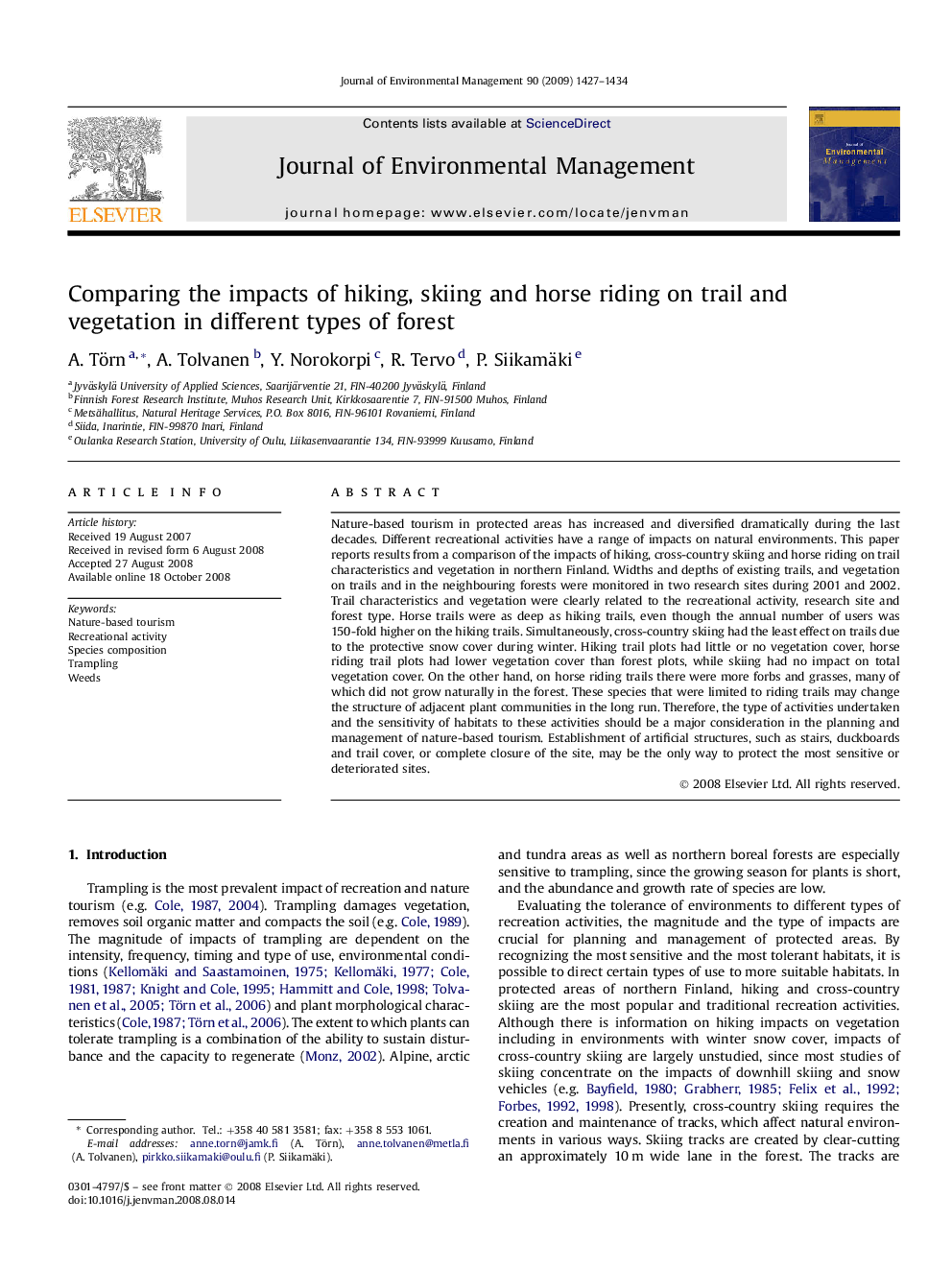| کد مقاله | کد نشریه | سال انتشار | مقاله انگلیسی | نسخه تمام متن |
|---|---|---|---|---|
| 1057960 | 947099 | 2009 | 8 صفحه PDF | دانلود رایگان |

Nature-based tourism in protected areas has increased and diversified dramatically during the last decades. Different recreational activities have a range of impacts on natural environments. This paper reports results from a comparison of the impacts of hiking, cross-country skiing and horse riding on trail characteristics and vegetation in northern Finland. Widths and depths of existing trails, and vegetation on trails and in the neighbouring forests were monitored in two research sites during 2001 and 2002. Trail characteristics and vegetation were clearly related to the recreational activity, research site and forest type. Horse trails were as deep as hiking trails, even though the annual number of users was 150-fold higher on the hiking trails. Simultaneously, cross-country skiing had the least effect on trails due to the protective snow cover during winter. Hiking trail plots had little or no vegetation cover, horse riding trail plots had lower vegetation cover than forest plots, while skiing had no impact on total vegetation cover. On the other hand, on horse riding trails there were more forbs and grasses, many of which did not grow naturally in the forest. These species that were limited to riding trails may change the structure of adjacent plant communities in the long run. Therefore, the type of activities undertaken and the sensitivity of habitats to these activities should be a major consideration in the planning and management of nature-based tourism. Establishment of artificial structures, such as stairs, duckboards and trail cover, or complete closure of the site, may be the only way to protect the most sensitive or deteriorated sites.
Journal: Journal of Environmental Management - Volume 90, Issue 3, March 2009, Pages 1427–1434